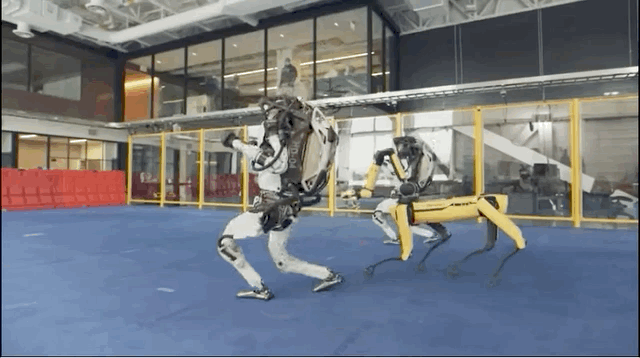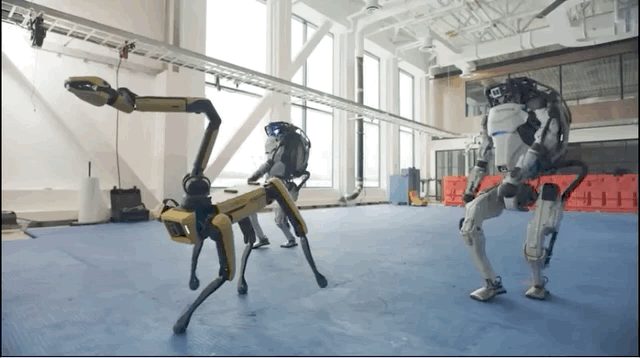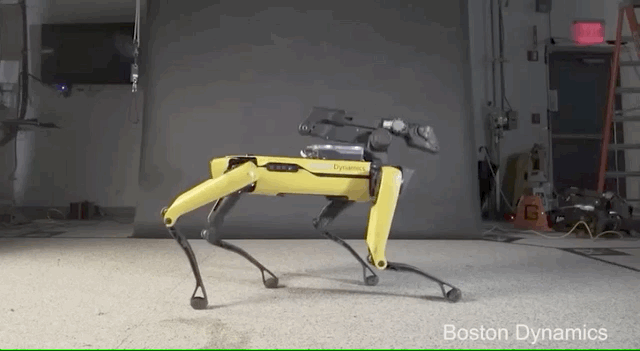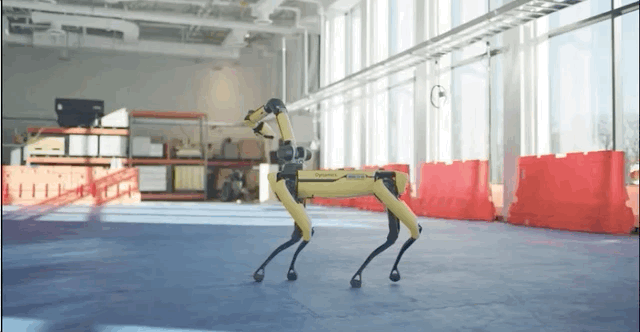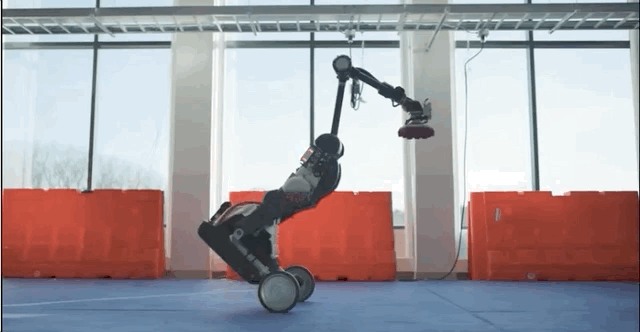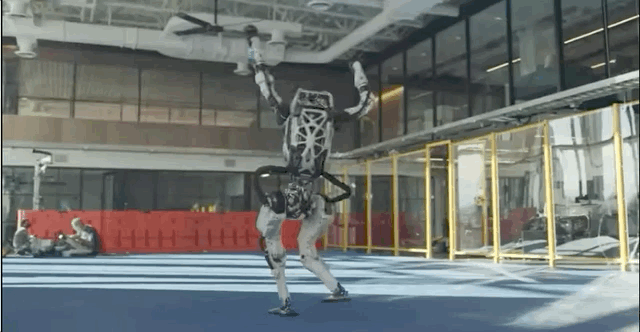The magic dance video of Boston Dynamics Robot is here.
Editor’s note: This article is from the WeChat public account “Xin Zhi Yuan” (ID: AI_era), source: foreign media, editor: Xin Zhi Yuan Editorial Department.
Boston Dynamics just released an extremely joyful dance video. The humanoid robot Atlas, the robotic dog Spot, and the porter Handle have all appeared. They danced with the song Do You Love Me, the movements are neat and uniform, flexible and joyful.
In our impression, Boston Dynamics’ Atlas and Spot robots can do many things: sprinting, gymnastics, parkour, backflips, washing dishes, and “finding a real job” and so on.
But this company’s latest video shows us another impressive skill: imitating pathological dance steps.
In the video, the entire lineup of Boston Dynamics robots: humanoid robot Atlas, dog-shaped robot Spot, and Handle all come together to perform a set of coordinated dance moves. The soundtrack is Do You Love Me from The Contours.< /p>
Most friends may not be familiar with this song. Do You Love Me is a hit single from 1962. The style is as follows:
Look at this retro dance step, but Atlas still learns it vividly.
This is not the first time Boston Dynamics has demonstrated the dancing skills of its robots. In 2018, it also showed a video of Spot robots performing space walks in Uptown Funk.frequency.
But the newly released video takes things to another level. The humanoid robot Atlas shows skillful dance moves on the dance floor: running, jumping, dragging and spinning.
As more and more robots are deployed, dancing coordinated dances, making bad human dances dwarfed, things become even more incredible. Compared with the unstable movement of the 2016 Atlas iteration, this new model looks almost like a CGI (Computer-generated imagery) creation.
Musk also tweeted. It is estimated that even he who dreams of Mars every day did not expect that this video is not CGI.
Spot Mini ballet, have you seen it?
The most important feature of ballet is that the actress has small steps and graceful swan necks with her toes. Look at Spot Mini, there is an internal taste…
The new video released this time also brings the latest dance debut of the robot Handle, imitating The Contours, swinging with the rhythm of Do You Love Me.
Atlas, the most capable robot of Boston Dynamics, showed some new tricks. It effortlessly stands on one foot, twists the body, and ghost dances. It has a great posture to dominate the dance floor.
The original intention of this fun and relaxing video is to allow robots to gradually adapt to some of the characteristics of humans, and ultimately make these robots automated actions more common in daily life.
Boston Dynamic Robot has left the laboratory. Is the world ready?
Boston Dynamics was recently acquired by Hyundai Korea from SoftBank for US$1.1 billion. This is the third time it has changed ownership in seven years.
Boston Dynamics was originally a laboratory of the Massachusetts Institute of Technology. In 1992, the company became independent. After that, Boston Dynamics quickly became a well-known robot manufacturing company.
In a laboratory stage at MIT, it was famous for its dog-like quadruped robots (the most famous is the BigDog funded by DARPA, the US Department of Defense Advanced Research Projects Agency, which is the company’s first commercial robot Spot. Predecessor.)
In 2013, it was acquired by Google’s parent company Alphabet’s X division, and in 2017 it was acquired by SoftBank. After being acquired by SoftBank, Boston Dynamics has been actively promoting the “commercialization” of its products. Prior to this, the company has focused on military and robotics research for 25 years.
Sometimes, Boston Dynamics is more like a “research institution” than a company, mass production of technologically advanced but “unprofitable” machines. This has a lot to do with its founder, Marc Raibert. Mark Leiport is a typical “academic entrepreneur”. After receiving his PhD from MIT, he founded the CMUleg laboratory at Carnegie Mellon University and served as an associate professor. In 1986, Mark Ray Porter returned to MIT and continued
